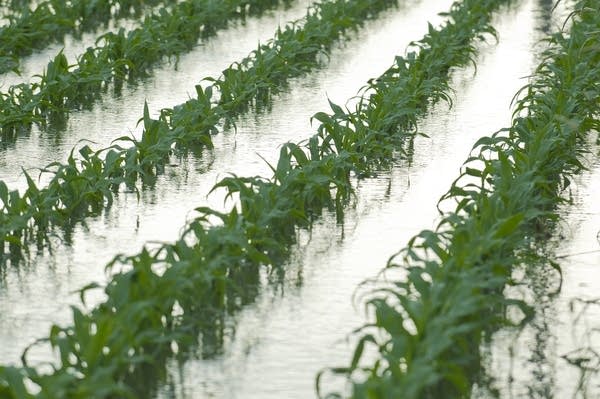After June storms, farmers in four counties can seek federal help

Farmers in four southwest Minnesota counties where heavy rain and hail damaged crops last month are eligible for federal help.
U.S. Secretary of Agriculture Tom Vilsack designated Rock County, where storms damaged as many as 100,000 acres of farmland, as a primary disaster zone.
Rock County Farm Service Agency executive director Fraser Norton said several months' worth of rain fell in a few weeks.
"There were some areas of the county that got over 20 inches over a three week period," Norton said.
Create a More Connected Minnesota
MPR News is your trusted resource for the news you need. With your support, MPR News brings accessible, courageous journalism and authentic conversation to everyone - free of paywalls and barriers. Your gift makes a difference.
Under USDA regulations counties bordering the primary disaster zone also qualify, allowing farmers in Murray, Nobles and Pipestone Counties also to seek federal assistance.
Norton said farmers can apply for up to $500,000 in low interest loans.
Statewide, damage from last month's flooding has surpassed $50 million and is still rising, Gov. Mark Dayton said.
State and local officials are waiting for the federal government to declare a disaster. Dayton said he expects that declaration to be issued soon — securing federal funding to help state and local communities repair damaged roads, bridges and other public property.
Dayton has declared a state of emergency for 51 counties. He said the cost of the damage has exceeded preliminary estimates, and he expects a large part of the state to be covered under the disaster declaration.
"I think it's upwards of $50 million right now which is an understatement after everybody tallies it. A lot of the damage you still can't quantify because the water is still standing or still in the lakes."
If President Obama declares a major disaster, the federal government would fund 75 percent of approved costs. The state would have to pay the rest.
MPR News' Tom Scheck contributed to this report.